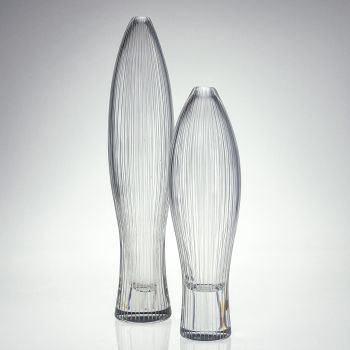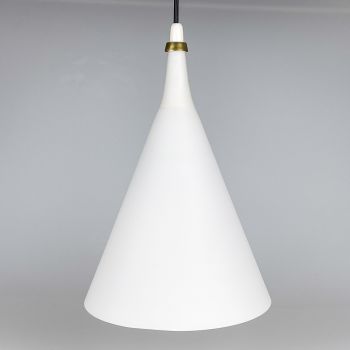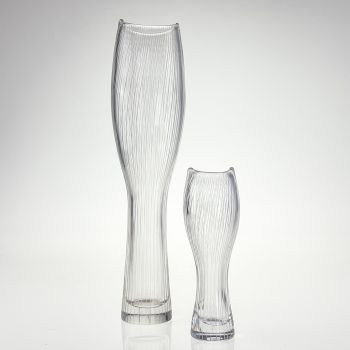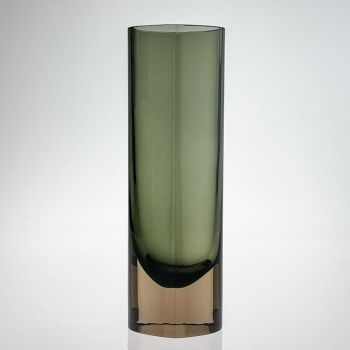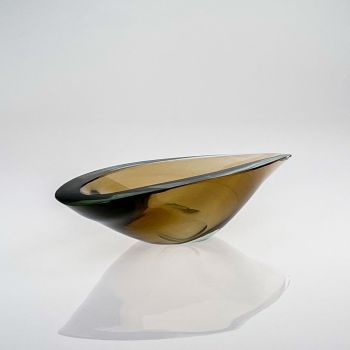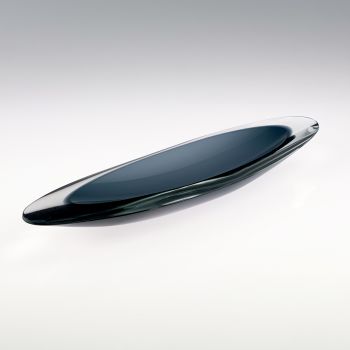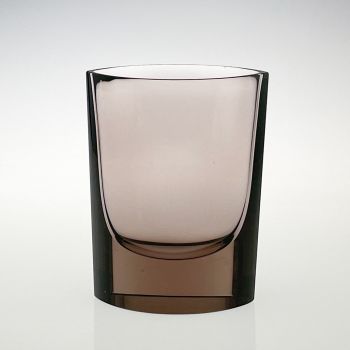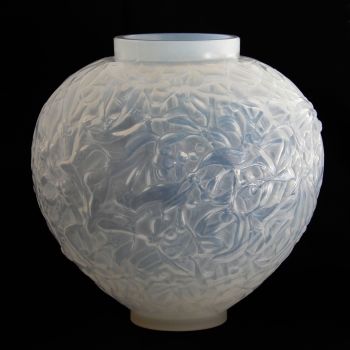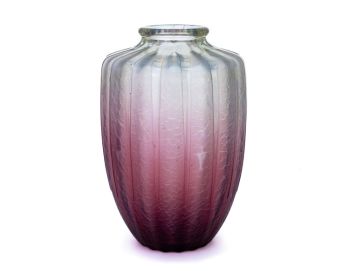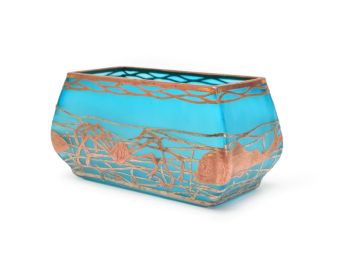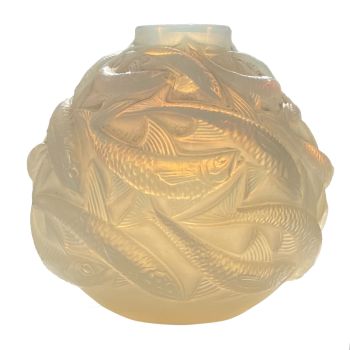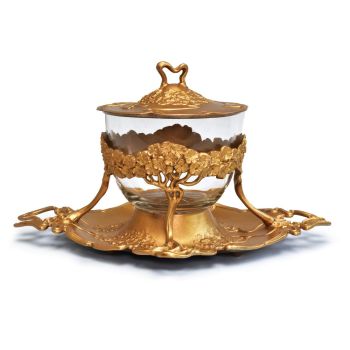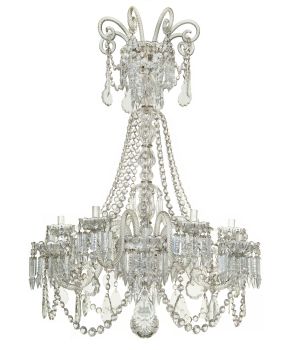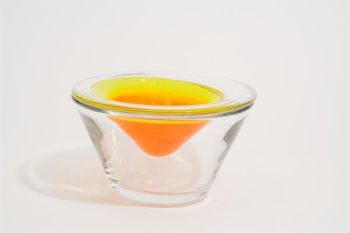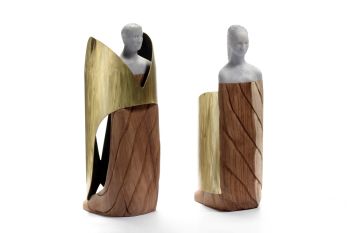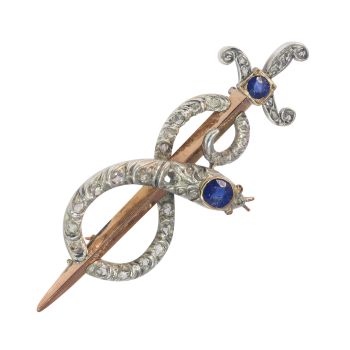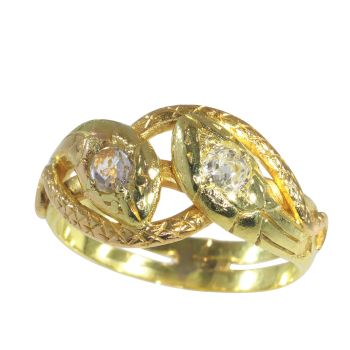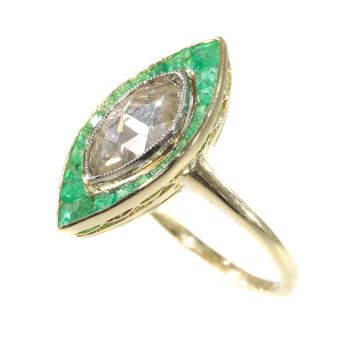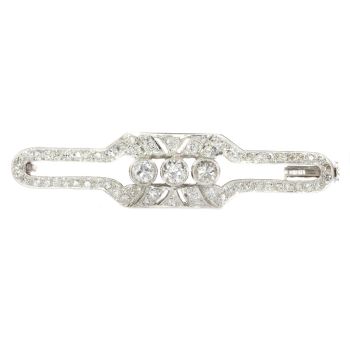Crystal Art-Object with sodium bubbles, model 3242 - Iittala, Finland circa 1948 1948 - 1949
Tapio Wirkkala
CrystalGemstone
14 cm, ø 8 cm
ConditionVery good
Currently unavailable via Gallerease
- About the artworkMold blown, crystal Art-object with sodium bubbles, model 3242. Designed by Tapio Wirkkala in 1948. This model was only produced for two years, namely 1948 or 1949 by the craftsmen at the Iittala glassworks in Finland.
The glassmass was blown in a special mold after which it was formed in the final shape while still hot. The bubbles in the glass were created by adding sodium into the glassmass. These particals would chemically react and form bubbles.
Execution Collapse
Iittala, Finland between 1948-1949
Marked
Tapio Wirkkala - Iittala in diamondpen
Condition
Good overall condition, minor wear consistent of age and use. No cracks or chips.
Literature
Marianne Aav, TAPIO WIRKKALA eye, hand and thought: p. 395
Dimensions
H. 14.1 cm
Diam. 8.57 cm
Weight 910 grams
About Tapio Wirkkala
Tapio Wirkkala (1915 Hanko, Finland - 1985 Helsinki, Finland) A giant of Finnish design, Wirkkala was an artist of great diversity for whom no material was alien and who left no area of design unexplored.
A glass design competition held by the Iittala glassworks in 1946 was the event that set his career in motion; the first prize went jointly to Wirkkala and Kaj Franck.
With an oeuvre that ranges from exceptionally beautiful pieces of glass art to industrial design in the form of beer bottles and banknotes, Wirkkala also designed jewellery, sculptures, and furniture.
The recipient of many awards, honorary titles, and a doctorate, Wirkkala won three Grand Prix medals at the Milan Triennale in 1954 and an additional Grand Prix medal and gold medal at the Milan Triennale in 1960. - About the artist
Tapio Wirkkala (1915-1985) was a multitalented design genius, widely considered a leading figure of modern Finnish industrial art. Wirkkala's wide ranging portfolio spans from glass, furniture and product design to sculpture, city planning, art, graphics and even creating banknotes for the Finnish treasury.
Throughout his incredibly productive career, Wirkkala received numerous awards including three gold medals at the Milan Triennale, the Lunning Prize, Pro Finlandia Medal and the Prince Eugen Medal.
In 1946, Wirkkala won his first design award in a competition sponsored by Iittala that would mark a lifelong relationship with lasting effects on his career and the company. As Iittala’s artistic director, Wirkkala’s unique artistic vision helped establish the company’s global reputation.
Throughout his legendary career, the uniquely talented artist created more than four hundred glass objects for Iittala, many of which, like the Ultima Thule and Tapio series remain popular today.
Artwork details
Related artworks
- 1 - 4 / 9
Børge Mogensen
Teak wood “dropleaf” desk – Søborg Møbler, Denmark circa 19551950 - 1960
Price on requestVan Kerkhoff Art
1 - 4 / 24Unknown artist
François-Théodore Legras – Tall “Fleurs de Pommier” apple blossoms vase1900 - 1909
Price on requestAntiques Emporium
1 - 4 / 24Unknown artist
Enchanting 1870s Vintage Fly Brooch: Victorian Elegance in Gold1870
€ 4.600Adin Fine Antique Jewellery
 Curated by
Curated byDanny Bree
1 - 4 / 24








